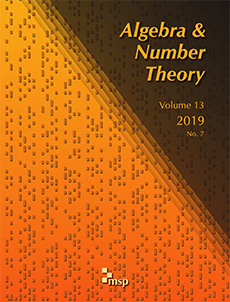Abstract
For any finite Coxeter group , we introduce two new objects: its cutting poset and its biHecke monoid. The cutting poset, constructed using a generalization of the notion of blocks in permutation matrices, almost forms a lattice on . The construction of the biHecke monoid relies on the usual combinatorial model for the -Hecke algebra , that is, for the symmetric group, the algebra (or monoid) generated by the elementary bubble sort operators. The authors previously introduced the Hecke group algebra, constructed as the algebra generated simultaneously by the bubble sort and antisort operators, and described its representation theory. In this paper, we consider instead the monoid generated by these operators. We prove that it admits simple and projective modules. In order to construct the simple modules, we introduce for each a combinatorial module whose support is the interval in right weak order. This module yields an algebra, whose representation theory generalizes that of the Hecke group algebra, with the combinatorics of descents replaced by that of blocks and of the cutting poset.
Citation
Florent Hivert. Anne Schilling. Nicolas Thiéry. "The biHecke monoid of a finite Coxeter group and its representations." Algebra Number Theory 7 (3) 595 - 671, 2013. https://doi.org/10.2140/ant.2013.7.595
Information





